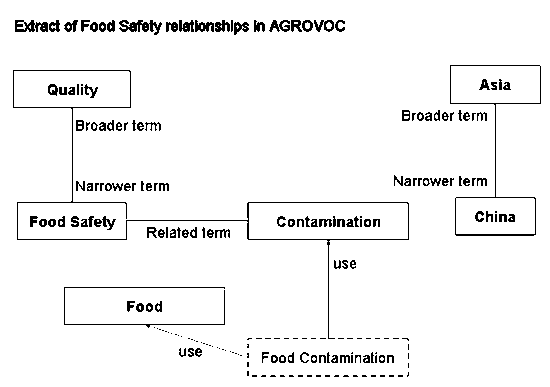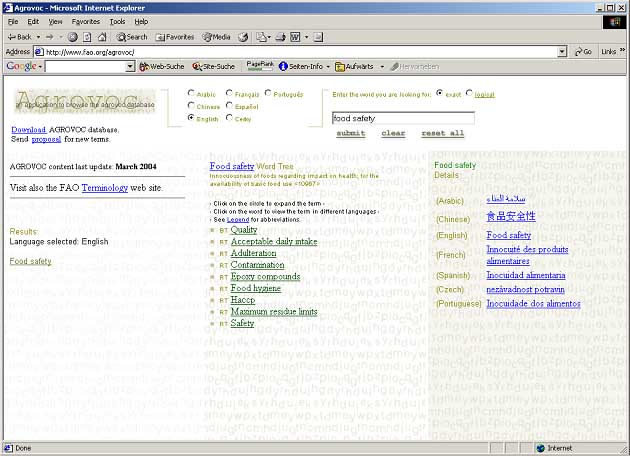Figure 1 shows a graphical representation of a few terms and their relationships taken from AGROVOC.

Figure 1: Thesaurus example on Food Safety taken from AGROVOC
Basically, all the possible modelling paradigms (the most important) of thesauri are represented in the above example. Let’s have a closer look at the information we can get out of this example:
The example shows the term “Food Safety” as a narrower term of “Quality”, which means that “Food Safety” is generally regarded as a specification of “Quality”. It is further linked via the generic ‘related term’ relationship to the term “Contamination” which means that in some way, “Food Safety” has to do with “Contamination”. The relationship between “Contamination”, “Food” and “Food Contamination” expresses synonymy, i.e. the term “Food” should be used in combination with “Contamination” in order to express “Food Contamination”. In thesauri this relationship is mainly used for indexing purposes, indicating that instead of using “Food Contamination” for indexing a document, the other two terms should be used in combination. Furthermore, China is shown as a narrower term of Asia.
Obviously, the information that can be extracted from the above example is very limited to static and rather unspecific information. There is no indication on how “Food Safety” is affected by “Contamination”, neither is there a consistent application of the broader/narrower term relationship. It simply indicates that in some way one term is more specific than another. The screen shot in Figure two shows the full extract of the term “Food Safety” taken from AGROVOC. The application of relationships shown here leave much space for individual interpretation.

Figure 2: The term “Food Safety” in the AGROVOC thesaurus
Now what, if you want to talk about specific food items in specific countries and want to retrieve information about their food safety? In a thesaurus, as seen in the above examples, you can only model unspecified relations on a conceptual level. No notion of specific instances exist, neither a way to express that one specific instance is contaminated and another is not. The following section will show how ontologies modelled in RDFS can address these issues and provide the necessary modelling principles for more precise representations.